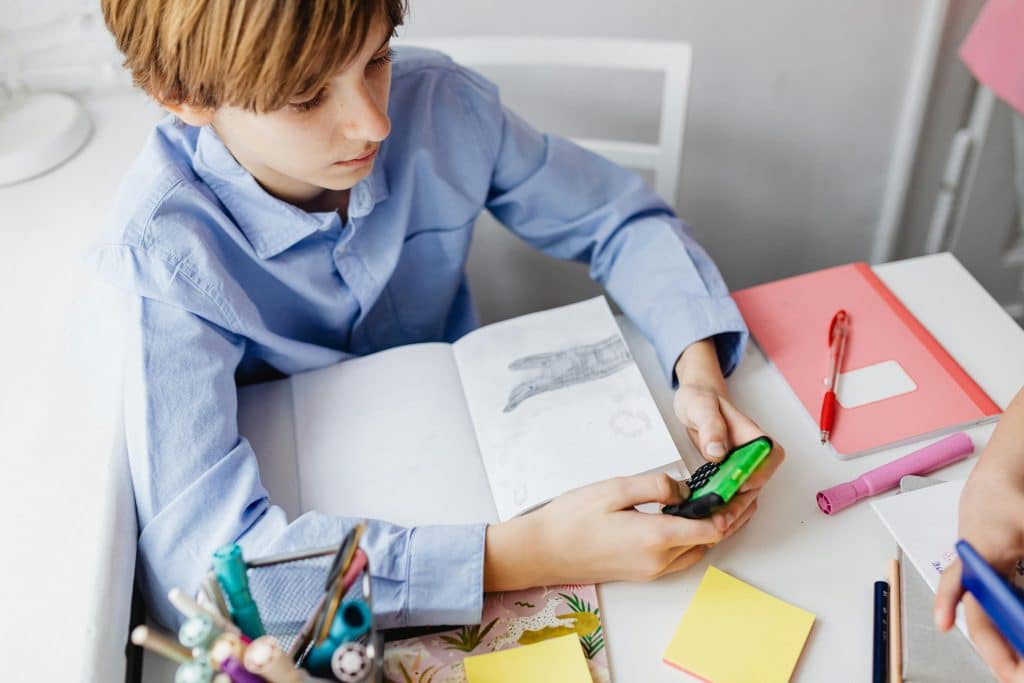As a licensed practitioner working with kids, I’ve seen firsthand how important it is for children to develop strong problem solving skills from a young age. Problem solving is a crucial life skill that helps kids navigate challenges, make decisions, and develop resilience. It’s not always easy though – as adults, we often want to jump in and solve problems for our kids. But by teaching them problem solving techniques, we empower them to tackle issues on their own and build confidence in their abilities. In this post, I’ll share some of the most effective problem solving techniques for kids that you can start using today.
Table of Contents
What is Problem Solving?
Problem solving involves identifying a problem, brainstorming potential solutions, choosing and implementing a solution, and evaluating the results. It’s a skill that doesn’t always come naturally, but with practice and guidance, kids can become adept problem solvers. A 2019 study found that children who received problem solving skills training showed significant improvements in their ability to generate solutions and make decisions compared to those who did not receive training.

Read more: What is Collaborative Problem-Solving?
Techniques for Teaching Problem Solving to Kids
1. Clearly Define the Problem
The first step in problem solving is to clearly identify and state the problem. Encourage your child to describe the issue they are facing in specific terms. For example, instead of saying “I can’t do my homework,” they could say “I’m having trouble understanding the instructions for this math assignment.”
Clarifying the problem helps your child focus on the core issue and not get overwhelmed. Ask questions like “What specifically is challenging about this?” or “How do you think this problem started?” to help them pinpoint the problem. Sometimes just stating it out loud can provide clarity.
2. Brainstorm Potential Solutions
Once the problem is clearly defined, have your child generate potential solutions. Emphasize that in brainstorming, no idea is too wild or far-fetched. The goal is to come up with as many possibilities as they can. You can make it fun by setting a timer and challenging them to devise a certain number of ideas.
If they get stuck, prompt them with questions like:
- What would happen if you tried ____?
- What would ____ do in this situation?
- What’s the silliest or craziest solution you can think of?
Encouraging creative thinking helps them realize there are multiple ways to approach a problem. A 2020 study showed that adolescents who received training in divergent thinking (the ability to generate creative ideas by exploring many possible solutions) demonstrated enhanced problem solving skills. So embrace the silly or unconventional ideas in this phase!
3. Evaluate and Select a Solution
Next, have your child assess the potential solutions they came up with. Ask them to consider the pros and cons of each one. Which solution is most likely to be successful? Which one could they implement on their own? Are there any that require help from others?
Help them think through the feasibility and potential outcomes of each solution. You could even have them rate or rank the ideas. Then encourage them to choose one solution to try out. Remind them that if the first solution they try doesn’t work, they can always go back to their list and select another.
Avoid jumping in with your opinion of the “best” solution. Allowing kids to evaluate the options and decide for themselves is an important part of the learning process. If the solution they choose isn’t successful, that becomes a learning opportunity to reflect on why and select a different approach.
4. Make a Plan and Try It Out
Once your child has chosen a solution, help them make a plan to implement it. Break the solution down into concrete action steps. Encourage them to be as specific as possible. For example, if they decided to ask the teacher for help with the math homework, the action steps could be:
- Write down my questions about the assignment
- Approach the teacher after class or during office hours
- Explain that I’m having trouble with the homework and ask my questions
- Take notes on the teacher’s explanation
- Thank the teacher for their help
Having a detailed plan makes the solution feel more manageable and helps kids stay on track. Once the plan is in place, encourage your child to give it a try. Remind them that it’s okay if it doesn’t work perfectly – they can always tweak the plan or try something else.
5. Evaluate the Outcome
After trying out a solution, have your child reflect on how it went. Did it work as planned? Were they able to solve the original problem? If not, what obstacles did they encounter? Evaluating the outcome helps kids learn from both successes and failures.
If the solution worked, celebrate the win! Acknowledging success reinforces your child’s confidence in their problem solving abilities. If it didn’t quite work out, praise their effort and brainstorm how they could adjust the solution or what they might try differently next time.
Reflecting on the problem solving process helps kids recognize that they can handle challenges and empowers them to keep working towards solutions. With practice, evaluating outcomes will become a natural part of their problem solving toolkit.

Read more: What is Problem-Solving Therapy?
Tips for Reinforcing Problem Solving Skills
In addition to walking your child through problem solving steps, there are some things you can do to reinforce these skills on an ongoing basis:
Encourage a Growth Mindset
Praise effort, creative thinking, and perseverance in problem solving, not just the final outcome. Remind kids that mistakes are opportunities for learning. When we normalize struggle as part of the process, kids are more willing to take on challenges and work through failed attempts.
Model Problem Solving
Pay attention to how you approach problems and narrate your process out loud. You might say things like “Hmm, this is tricky. Let me break it down” or “That solution didn’t work, let’s see why and what else I could try.” Modeling problem solving shows kids that it’s a skill adults use too and that there’s always more than one way to approach an issue.
Incorporate Puzzles and Games
Puzzles and strategy games give kids low-stakes opportunities to practice problem solving. Point out how they use techniques like trial-and-error or process of elimination while playing. Games also make a great metaphor for approaching real-life problems as solvable puzzles.
Goally | Visual Scheduler for Autism
Does your child struggle with getting ready in the morning independently? Goally’s routine app on the best tablet for kids breaks down large tasks into small, achievable steps for autistic kids. Create custom routines with your own videos & pictures for every step.
Teaching kids problem solving techniques doesn’t have to be complicated. By breaking down the process into steps, encouraging creative thinking, and providing plenty of opportunities for practice, you can help your child develop this critical life skill. Before you know it, they’ll be confidently tackling problems on their own – and you’ll be amazed at their resourcefulness!
Resources:
- Edutopia – Edutopia is a trusted source for evidence-based practices and strategies in K-12 education, including resources on teaching problem solving skills.
- National Association for the Education of Young Children (NAEYC) – NAEYC provides high-quality resources and guidance for early childhood educators and parents, with a focus on developmentally appropriate practices.
- American Psychological Association (APA) – The APA offers research-backed information and resources on child development, education, and psychology, including materials related to problem solving and critical thinking skills.
FAQs about Problem Solving Techniques
1. What are some simple problem-solving techniques for kids?
For kids, techniques like the "Stop, Think, Act" method work well, where they learn to pause before reacting, consider their options, and then take action. Storytelling and role-playing can also help them understand the process of finding solutions to problems in a fun and engaging way.
2. How can you teach kids to solve problems on their own?
Encourage kids to express the problem in their own words, which fosters understanding, and guide them to brainstorm different solutions, emphasizing the value of trying multiple approaches. Teaching them to evaluate the outcomes of their actions helps build independence in problem-solving.
3. Why is it important for kids to learn problem-solving techniques early on?
Learning problem-solving techniques early on equips kids with the ability to handle challenges independently and with confidence, fostering resilience and critical thinking skills that are vital for their personal and academic success.
4. Can games improve problem-solving skills in children?
Yes, games that require strategy, like puzzles and logic-based board games, can significantly enhance a child's problem-solving skills by challenging them to think critically and plan ahead while keeping the learning process enjoyable.
5. How can parents model problem-solving behavior for their children?
Parents can model problem-solving by narrating their thought process while tackling everyday problems, showing that it's okay to make mistakes and by approaching challenges calmly and thoughtfully. Involving kids in household decisions and problem-solving can also provide practical experience.

Hennah is an experienced writer and researcher, helping children with autism, ADHD, and other neurodivergent conditions. As a blog contributor for Goally, she combines her deep understanding of neurodiversity with practical advice, offering valuable insights to parents and educators.






